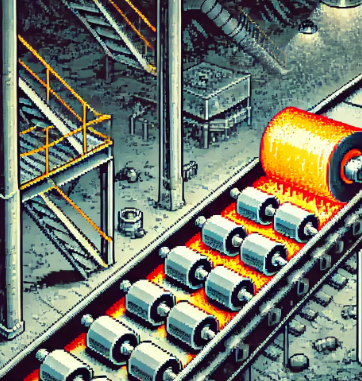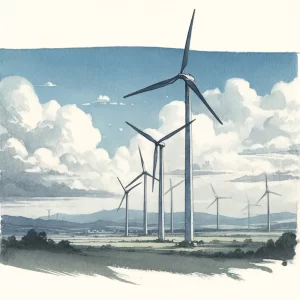
Catching Hidden Faults
Belt conveyors are a staple in industries ranging from manufacturing to mining. These machines efficiently move large quantities of materials over long distances. However, the conveyor’s numerous rollers are prone to faults, leading to costly breakdowns and even dangerous situations. Recently, researchers have explored an innovative solution to this problem using thermal infrared imaging. This technology promises to revolutionize how we detect and address these hidden faults, making our industrial systems safer and more efficient.
The Role of Rollers in Conveyor Systems
Think of a belt conveyor as a treadmill, but for materials. The rollers are like the treadmill’s internal gears, crucial for smooth operation. When these rollers malfunction, the entire system can come to a grinding halt. Common issues include increased energy consumption, belt misalignment, and even fires. Traditional detection methods, such as manual inspections and sound or vibration analysis, often fall short in pinpointing these problems due to the harsh environments where conveyors operate.
Enter Thermal Infrared Imaging
Thermal infrared imaging is like giving the conveyor rollers a health check-up without any physical contact. By detecting the heat emitted by the rollers, this technology can identify areas that are overheating—a clear sign of potential failure. Here’s how it works:
- Image Capture: A dual-spectral camera captures both visible and infrared images of the rollers.
- Identification: The YOLOv4 algorithm, a sophisticated image recognition tool, pinpoints the rollers in the images with 93.8% accuracy.
- Temperature Monitoring: The system measures temperature changes in real-time, focusing on the roller surfaces and bearings.
Why Temperature Matters
Temperature is a key indicator of roller health. Normally, a roller’s temperature will rise during the first 10 minutes of operation and then stabilize. However, if a roller’s bearing is damaged, the temperature will spike rapidly due to increased friction. Similarly, if a roller is blocked and not rotating correctly, its surface temperature will rise significantly.
Practical Application in Coal Mines
Coal mines are one of the harshest environments for conveyor systems. Dust, varying light conditions, and the constant movement of the conveyor pose significant challenges. In this setting, the research team tested their thermal imaging system on a DTL80-15-2×37 mine belt conveyor. They discovered that damaged rollers showed a temperature difference of about 7°C in the bearings and 8°C on the surface compared to normal rollers.
Enhancing Image Quality
Given the challenging environment, the researchers employed several image-processing techniques to ensure accurate readings:
- Wiener Filtering: Reduces noise and clarifies the thermal images.
- Adaptive Median Filtering: Suppresses noise while preserving details.
- Histogram Equalization and Sharpening: Enhances the contrast and details of the images.
These methods allowed the researchers to produce clear, accurate thermal images even in the dusty, low-light conditions of a coal mine.

Understanding YOLOv4 and Deep Learning
YOLOv4, or “You Only Look Once” version 4, is a cutting-edge algorithm in image recognition. It works by dividing the image into a grid and predicting bounding boxes for potential objects—in this case, conveyor rollers. The model’s high accuracy is crucial for identifying the exact location of each roller and ensuring that the temperature readings are precise.
Fault Detection and Analysis
Once the system identifies the rollers and monitors their temperatures, it uses a relative temperature difference method to detect faults. By comparing the temperature in potential fault areas with those in normal areas, the system can accurately identify issues like bearing damage or blockages.
The Future of Conveyor Maintenance
This innovative approach using thermal infrared imaging and deep learning algorithms offers a more reliable, efficient, and safer method for detecting roller faults in conveyor systems. By automating the process and reducing the reliance on manual inspections, industries can save time, reduce costs, and prevent accidents.
Discussion Questions
- How could other industries benefit from the use of thermal infrared imaging for equipment maintenance?
- What are some potential challenges in implementing this technology on a large scale in different industrial environments?
Unlock Science Secrets
Discover revolutionary research and innovative discoveries with ‘This Week in Science’! Designed for educators and science lovers, our free weekly newsletter offers insights that can transform your approach to science. Sign up now and deepen your understanding and passion for science.



